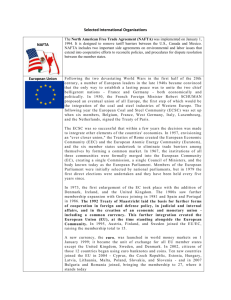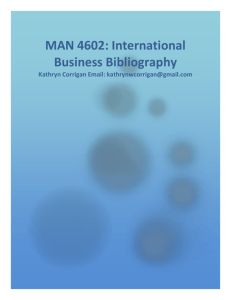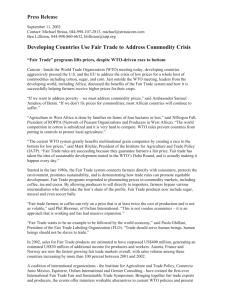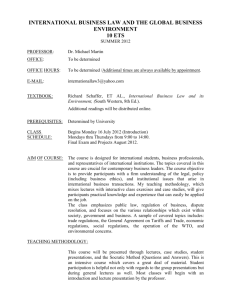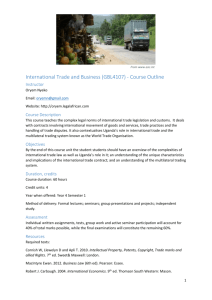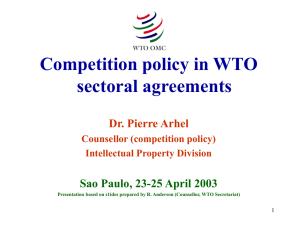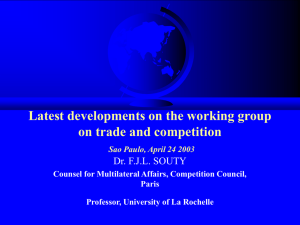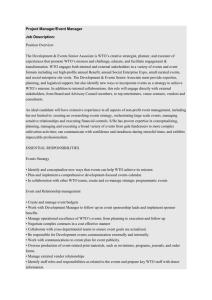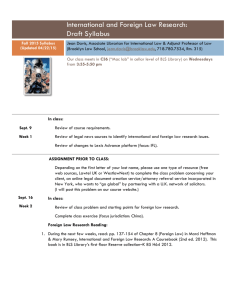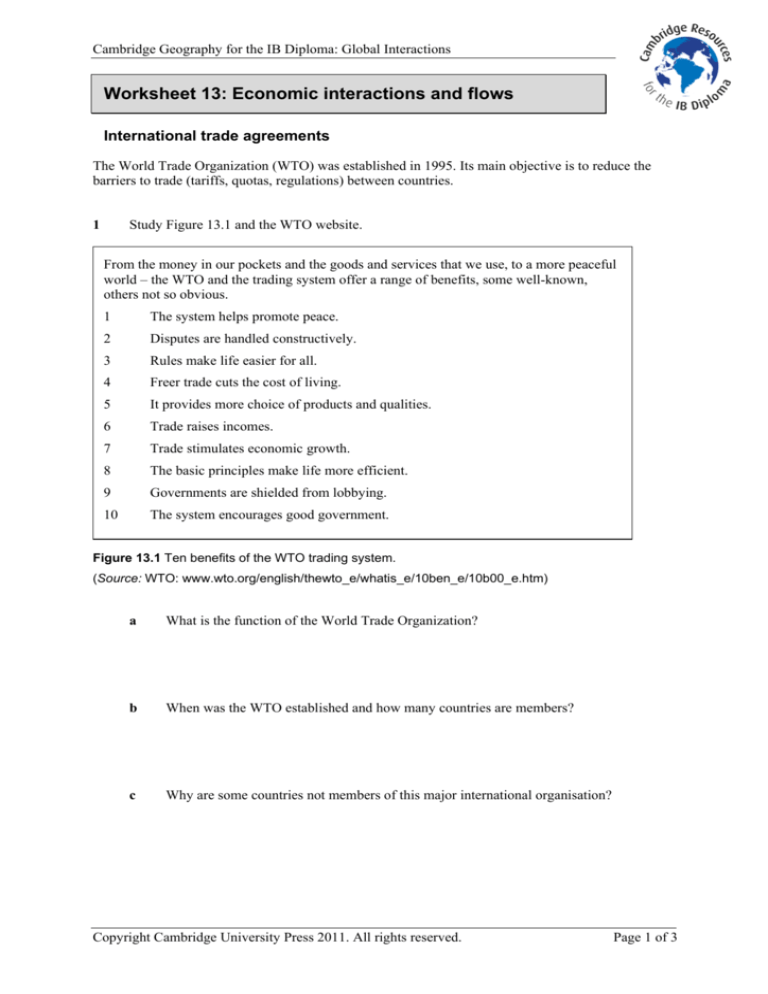
Cambridge Geography for the IB Diploma: Global Interactions
Worksheet 13: Economic interactions and flows
International trade agreements
The World Trade Organization (WTO) was established in 1995. Its main objective is to reduce the
barriers to trade (tariffs, quotas, regulations) between countries.
1
Study Figure 13.1 and the WTO website.
From the money in our pockets and the goods and services that we use, to a more peaceful
world – the WTO and the trading system offer a range of benefits, some well-known,
others not so obvious.
1
The system helps promote peace.
2
Disputes are handled constructively.
3
Rules make life easier for all.
4
Freer trade cuts the cost of living.
5
It provides more choice of products and qualities.
6
Trade raises incomes.
7
Trade stimulates economic growth.
8
The basic principles make life more efficient.
9
Governments are shielded from lobbying.
10
The system encourages good government.
Figure 13.1 Ten benefits of the WTO trading system.
(Source: WTO: www.wto.org/english/thewto_e/whatis_e/10ben_e/10b00_e.htm)
a
What is the function of the World Trade Organization?
b
When was the WTO established and how many countries are members?
c
Why are some countries not members of this major international organisation?
Copyright Cambridge University Press 2011. All rights reserved.
Page 1 of 3
Cambridge Geography for the IB Diploma: Global Interactions
2
d
Briefly describe some of the big decisions that have been made by the WTO.
e
Comment on the WTO’s view of the way in which the world trading system operates.
Study Figure 13.2 and the Global Policy Forum website.
Neoliberal ideology claims that international trade is an important factor for the development of poor
countries and their integration into the global economy. Rich governments’ promotion of these ideals
has led them to develop an array of new trade agreements such as the FTAA and CAFTA. These
bilateral, multilateral, and regional accords strongly affect people at all levels of the economy – from
growers and workers, to processors and consumers – by regulating pricing, tariffs, export levels, and
methods of production. Though supporters claim that trade agreements bring sustainable development
and economic integration, this is not the case. Rich countries maintain protections of their own
exports, while their competitors in poor countries agree to open their markets. Beneficial norms, such
as human rights, or environmental standards, are set aside. This leads to a ‘race to the bottom’, in
which the only priority is cost effective production, at the expense of workers, resources, and
sustainability. Due to these failings, the agreements tend to harm development and pull poor countries
deeper into poverty.
Figure 13.2 International trade agreements.
(Source: Global Policy Forum: www.globalpolicy.org/socecon/trade/indexagreement.htm)
a
What type of organisation is the Global Policy Forum?
b
How does its view of the world trading system differ from that of the WTO?
Copyright Cambridge University Press 2011. All rights reserved.
Page 2 of 3
Cambridge Geography for the IB Diploma: Global Interactions
c
How do the Global Policy Forum and other organisations like Oxfam want the
world trading system to change?
Copyright Cambridge University Press 2011. All rights reserved.
Page 3 of 3

